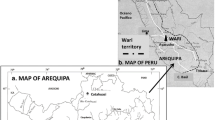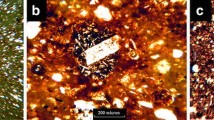Abstract
The technique of neutron activation analysis (NAA) has been employed to measure the content of 29 kinds of elements in the sample of Yaozhou porcelain bodies. Then a fuzzy cluster analysis has been conducted to the NAA data and a diagram of the dynamic fuzzy cluster analysis has been achieved. The results indicate that the batch of ancient Yaozhou porcelain bodies, which were of different overglaze color and were produced by different kilns during a period of over 800 years from the Tang Dynasty (618–907 A.D.) to the Yuan Dynasty (1271–1368 A.D.), has shared a stable and concentrated raw material source. Provenances of porcelain bodies from different times, though having their specific independence, enjoy a close relationship and are not far from one another. Provenances of porcelain bodies made during the Tang Dynasty and the Five Dynasties (907–960 A.D.) are found to be closer to one another, while those of the Song (960–1279 A.D.) and the Jin Dynasty (1115–1234 A.D.) are comparatively concentrated in certain areas and are different from those of the Tang Dynasty. Both the tri-colored glazed pottery made in Yaozhou kilns during the Tang Dynasty and the Yaozhou porcelain bodies of the Tang period are from the same provenance.
Similar content being viewed by others
References
Zhuo Zhenxi, Du Baoren, Kiln Sites of Huangbao in Tang Dynasty (in Chinese), Beijing Historical Object Press, 1990, 1–28.
Zhuo Zhenxi, Du Baoren, Kiln Sites of Huangbao in Five Dynasties (in Chinese), Beijing Historical Object Press, 1993, 1–15.
Zhuo Zhenxi, Du Baoren, Kiln Sites of Yaozhou in Song Dynasty (in Chinese), Beijing Historical Object Press, 1990, 1–26.
Wang Fen, Chen Shiping, Sun Hongwei, Research on Yaozhou celadon in the Five Dynasties Period, Proceedings of 1999 International Symposium on Ancient Ceramics (ed. Guo Jingkun) (in Chinese), Shanghai: Shanghai Science and Technology Press, 1999, 55–62.
Li Shi, Qin Ganging, Modern Experiment Technology Applied in Archaeology, Beijing Science Press, 1991, 309–312.
Li Rongwu, Yang, Lei, Li Guoxia et al., Neutron activation analysis and Mössbauer spectroscopy research on coloring mechanism of Chinese Ru porcelain, Chinese Science Bulletin, 2002, 47(14): 1163.
Zhao Weijuan, Xu Aijun, Li Rongwuo et al., Microelement analysis of sources of raw material of terracotta warriors and horses of Qin’s Mausoleum in pits Nos. 1 and 2, Chinese Science Bulletin, 2002, 47(16): 1137.
Li Guoxia, Zhao Weijuan, Gao Zhengyao, et al., A general intellectualized fuzzy cluster analysis system, Microelectronics & Computer (in Chinese), 2000, 17(2): 1.
Author information
Authors and Affiliations
Corresponding author
About this article
Cite this article
Li, G., Zhao, W., Li, R. et al. Fuzzy cluster analysis of the provenance of ancient Yaozhou porcelain body. Chin.Sci.Bull. 48, 27–30 (2003). https://doi.org/10.1007/BF03183328
Received:
Issue Date:
DOI: https://doi.org/10.1007/BF03183328




